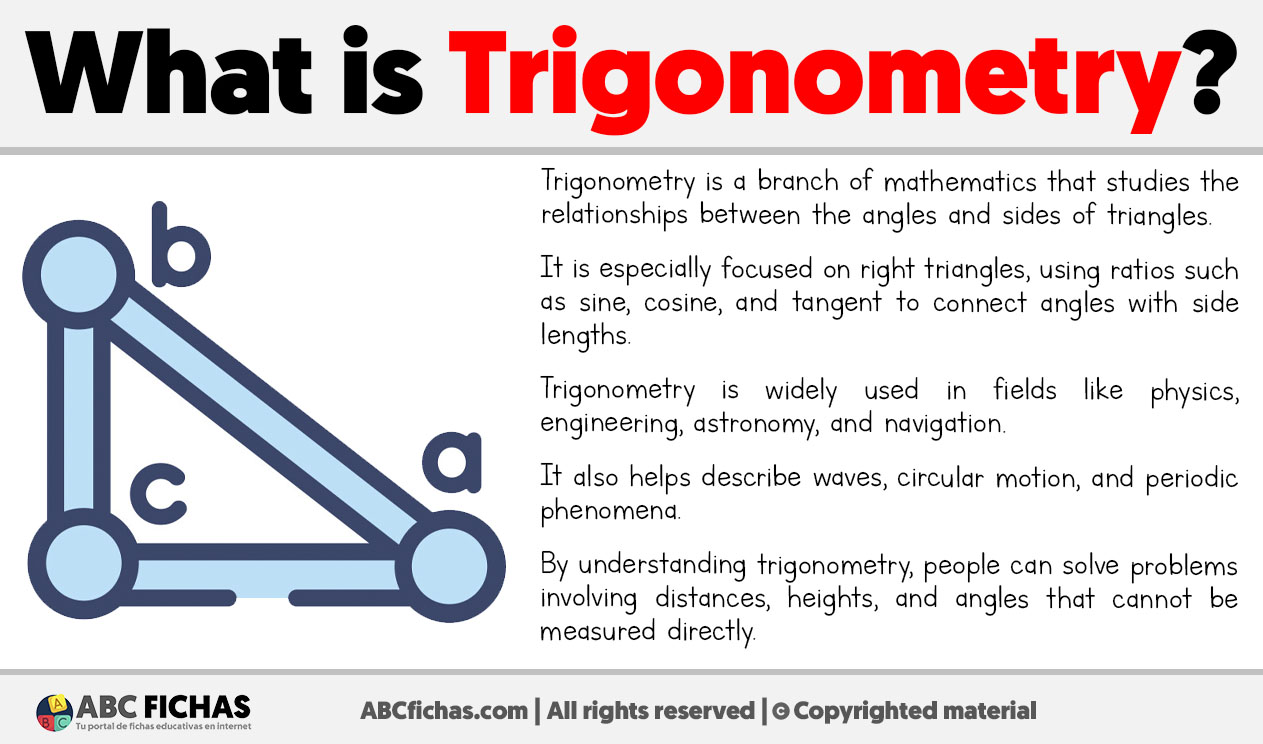Trigonometry is a specialized branch of mathematics that studies the relationships between the angles and sides of triangles, particularly focusing on right triangles. At its core, it examines how angles and side lengths are connected through ratios such as sine, cosine, and tangent. These fundamental functions allow mathematicians and scientists to describe and calculate distances and measurements that are otherwise difficult to obtain directly.

One of the main strengths of trigonometry is its practical application. For example, in engineering and architecture, it is used to design stable structures, calculate forces, and determine heights or distances without physically measuring them. In physics, trigonometry is essential to describe wave behavior, oscillations, circular motion, and many types of periodic phenomena. Astronomers also rely on it to estimate distances between planets, stars, and galaxies, while navigators have historically applied it to chart courses across oceans using the positions of celestial bodies.
Beyond its technical uses, trigonometry plays an important role in everyday problem-solving. It helps with tasks such as calculating angles for construction, designing computer graphics, or even determining the slope of a hill. By mastering trigonometric principles, students and professionals gain a powerful tool to connect abstract mathematical ideas with real-world situations.